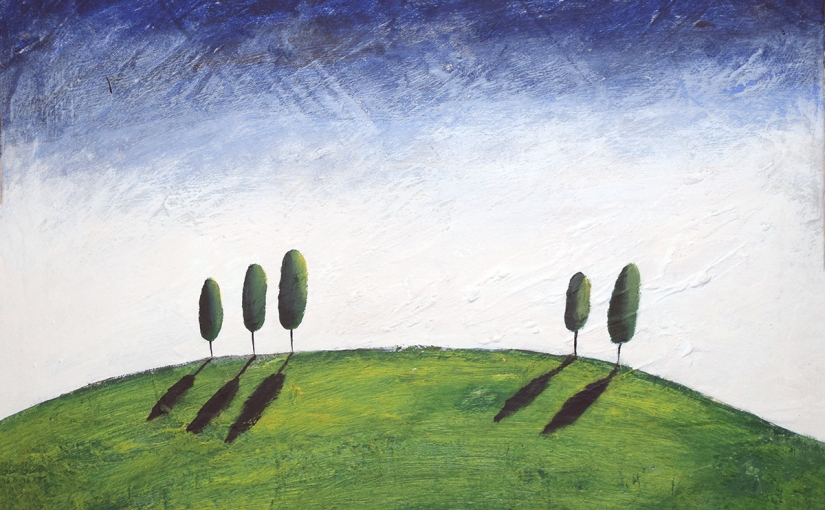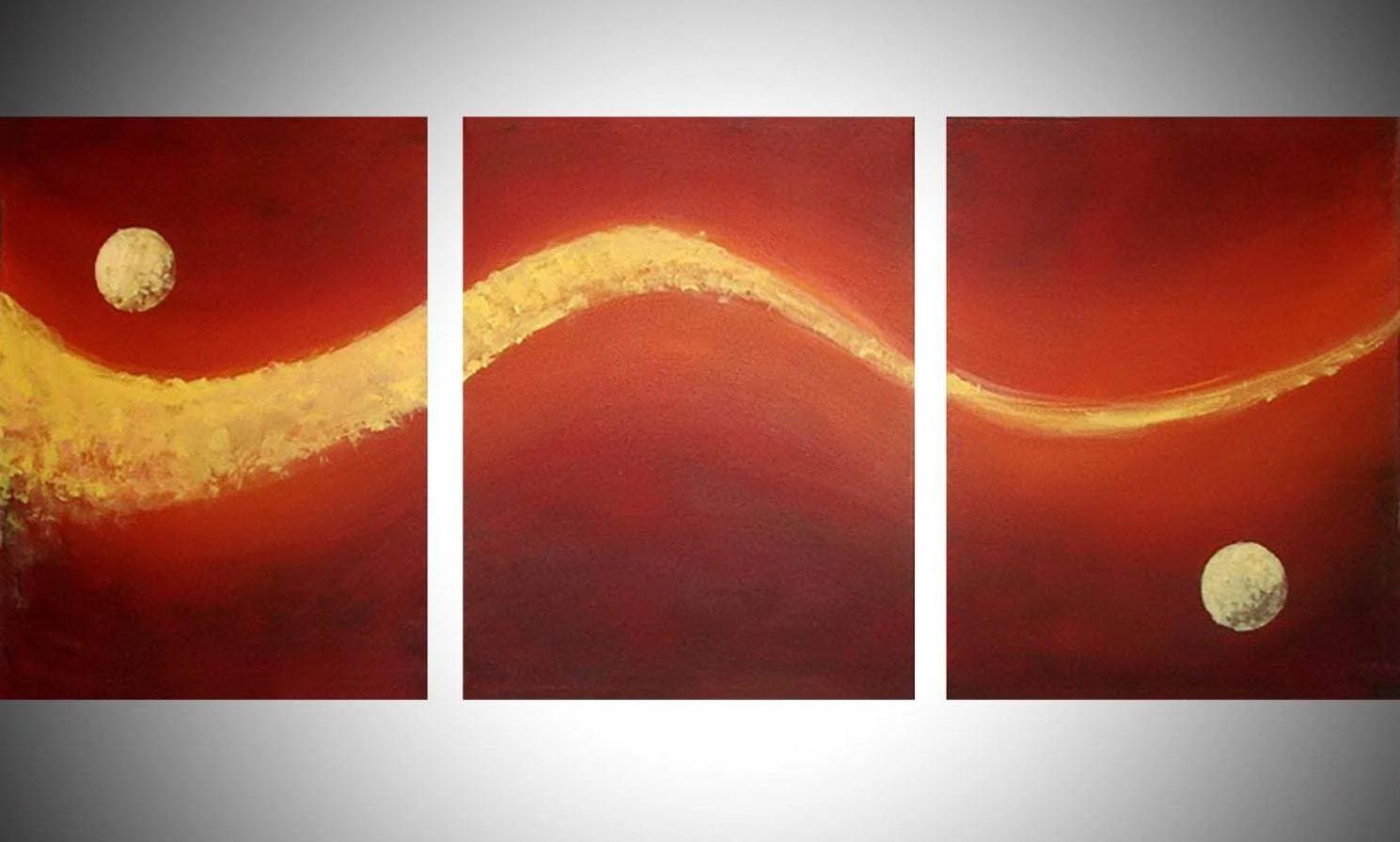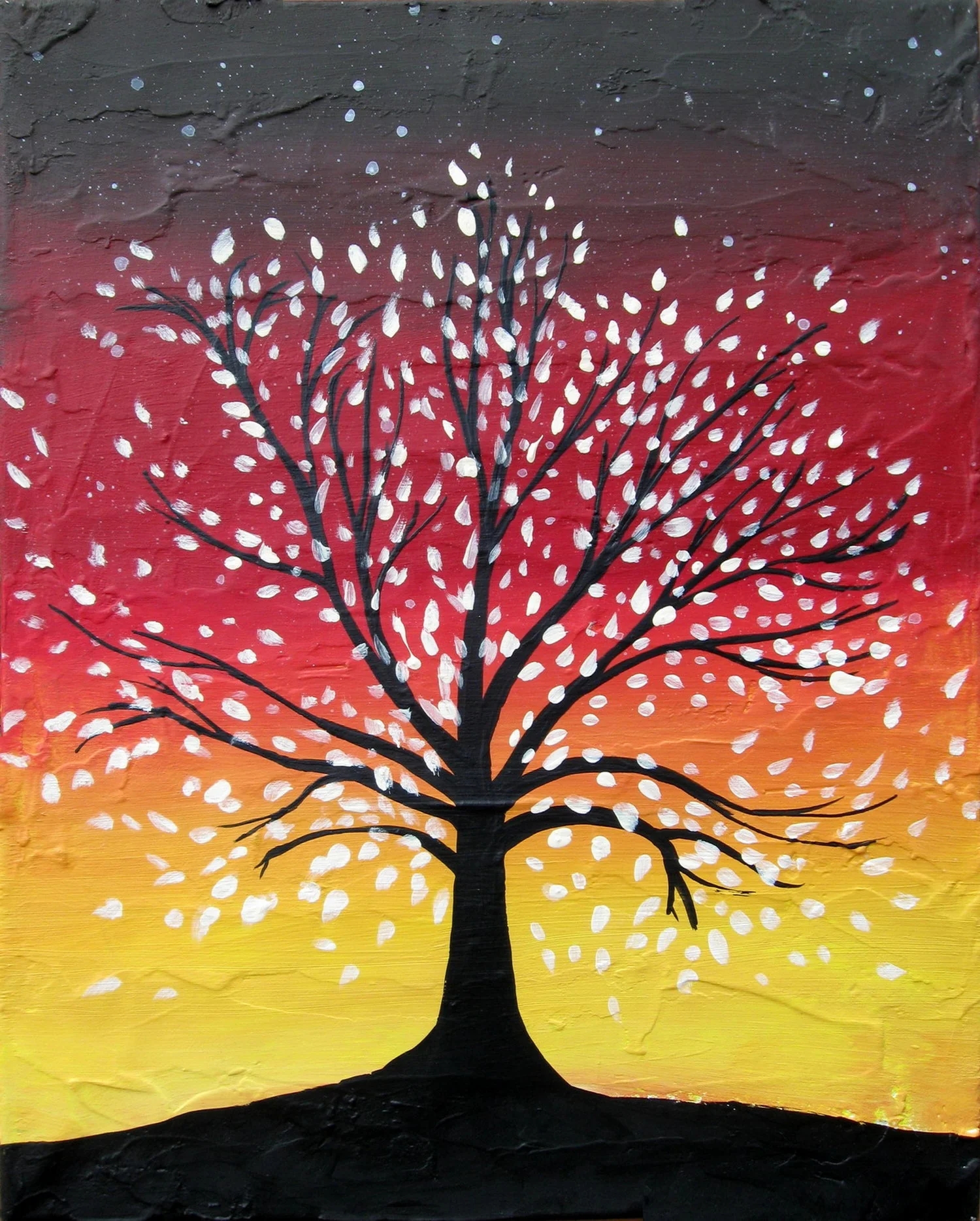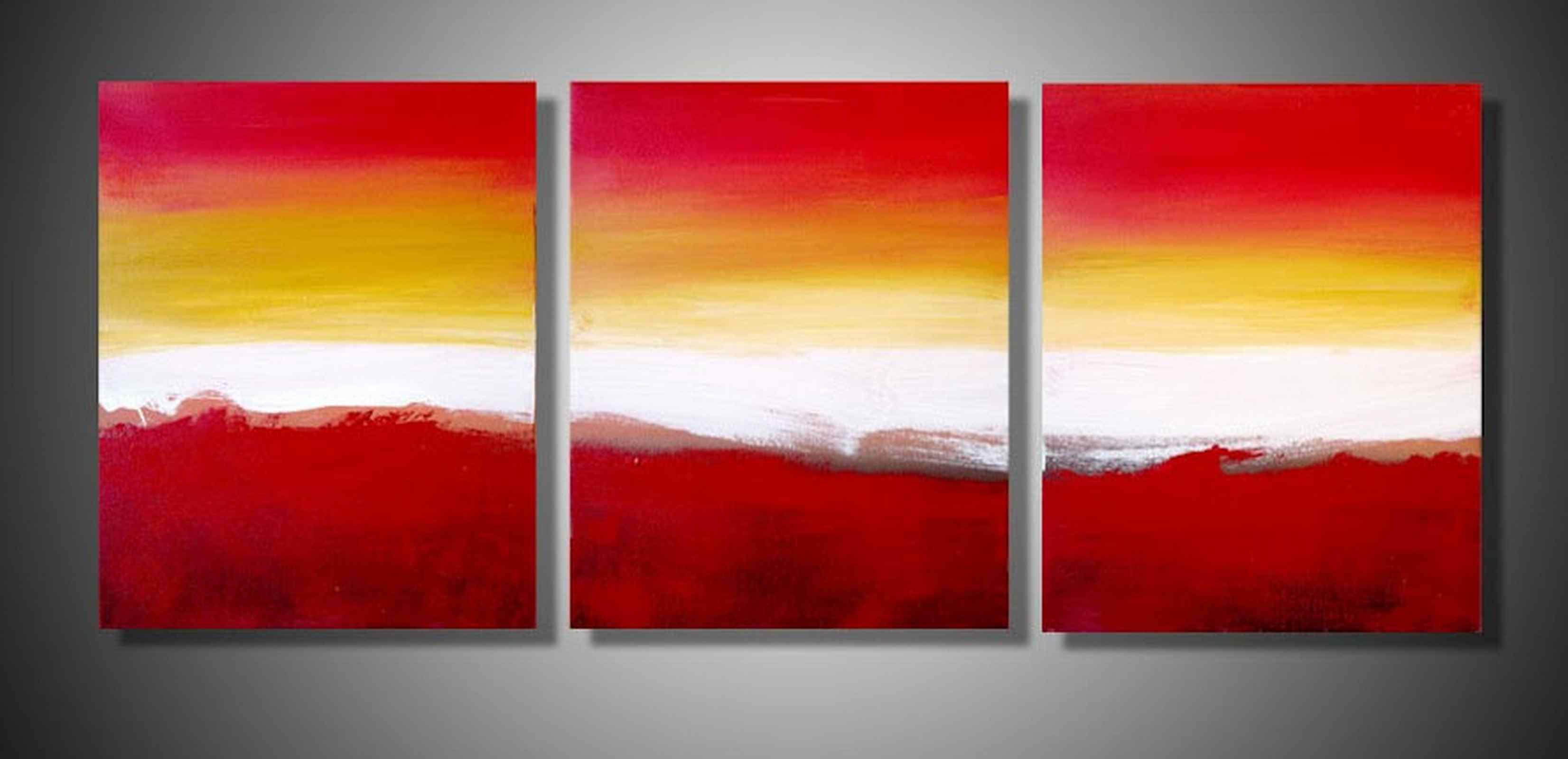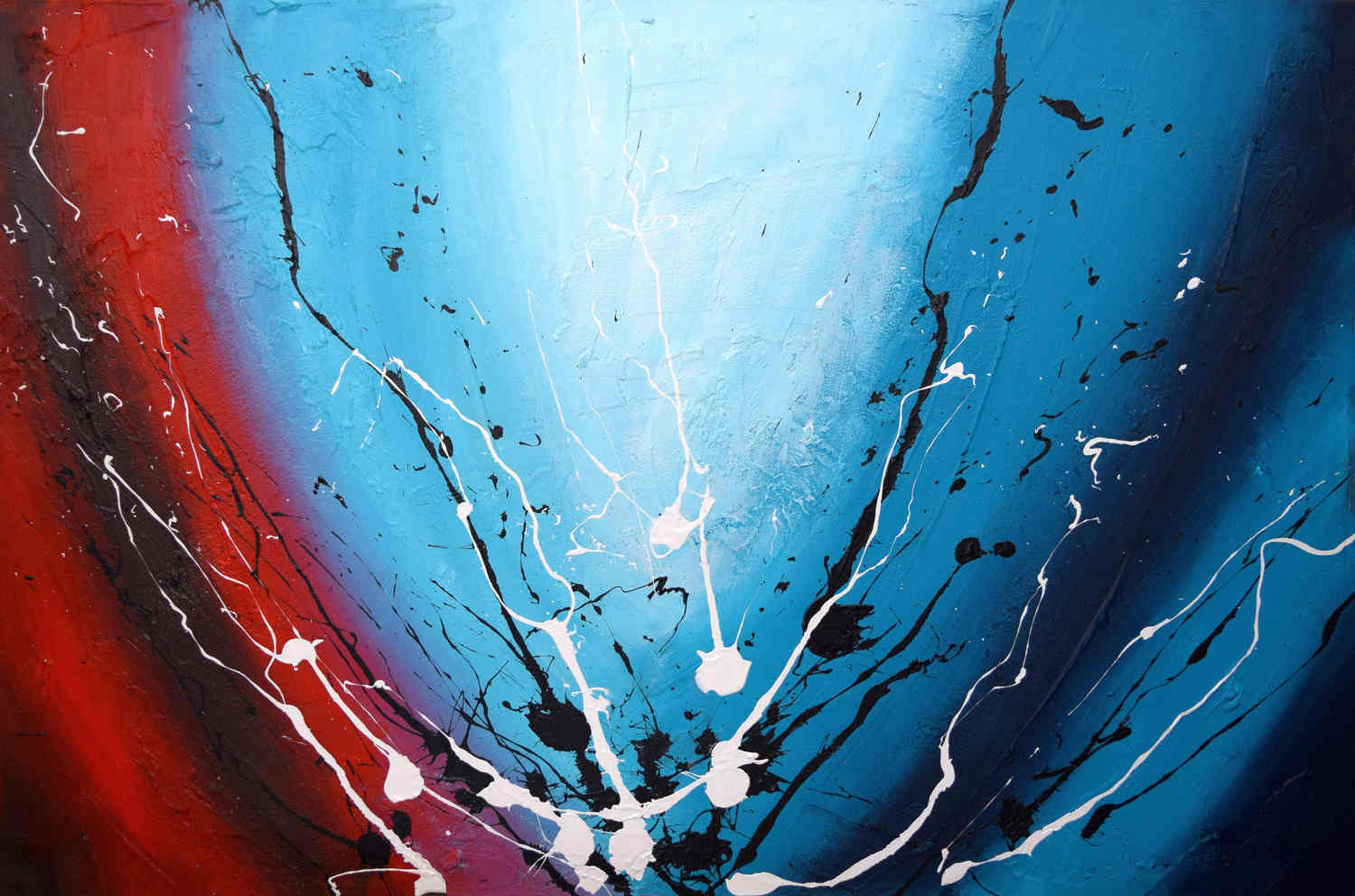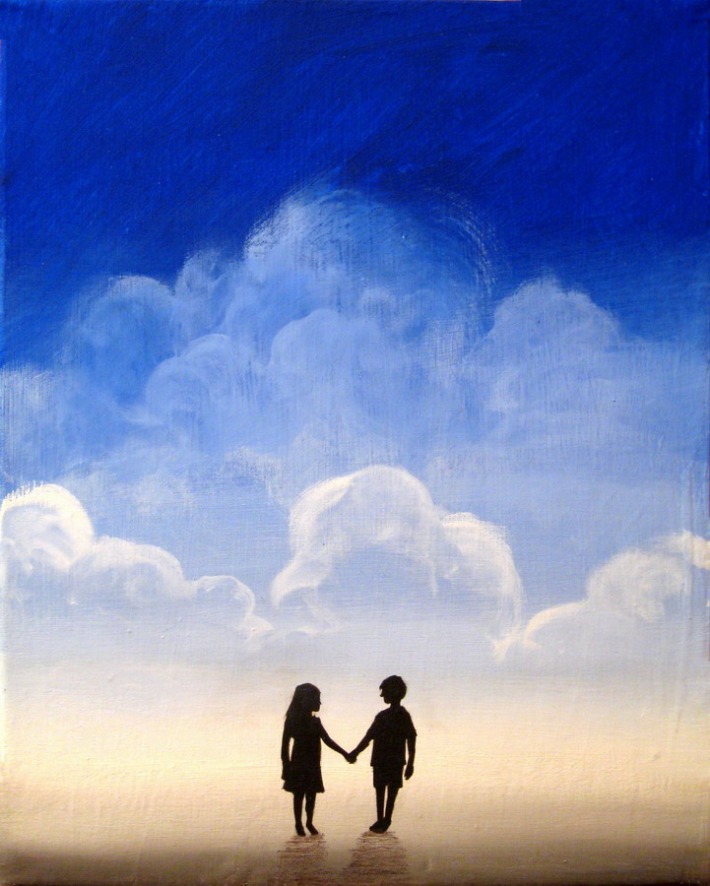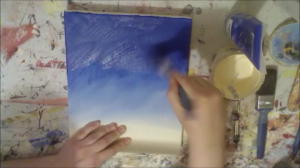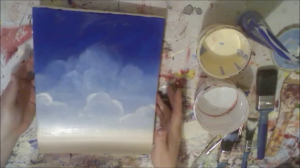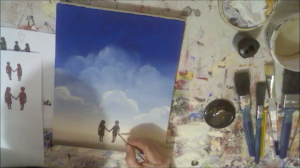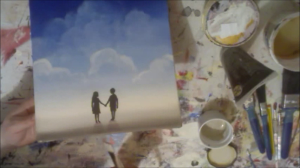Landscape art, also known as landscape painting, is the are of depicting landscapes – natural scenes such as valleys, mountains, trees, forests, and rivers, especially where the main subject is a wide view – with its parts placed in a coherent composition. In some works, landscape backgrounds for figure paintings can still form an important part of the canvas. Sky is almost always included in the work, and weather is often a large part of the composition. Detailed landscapes as a specific subject are not found in all artistic traditions, and develop when there is already a sophisticated tradition of representing other subjects. The two main traditions come from Chinese painting and western art, going back well over a millennium in both cases. The realisation of a spiritual element in landscape art is present from its beginnings in East Asian artwork, drawing on Daoism and other philosophical traditional thoughts, but in the West only becomes explicit with Romanticism
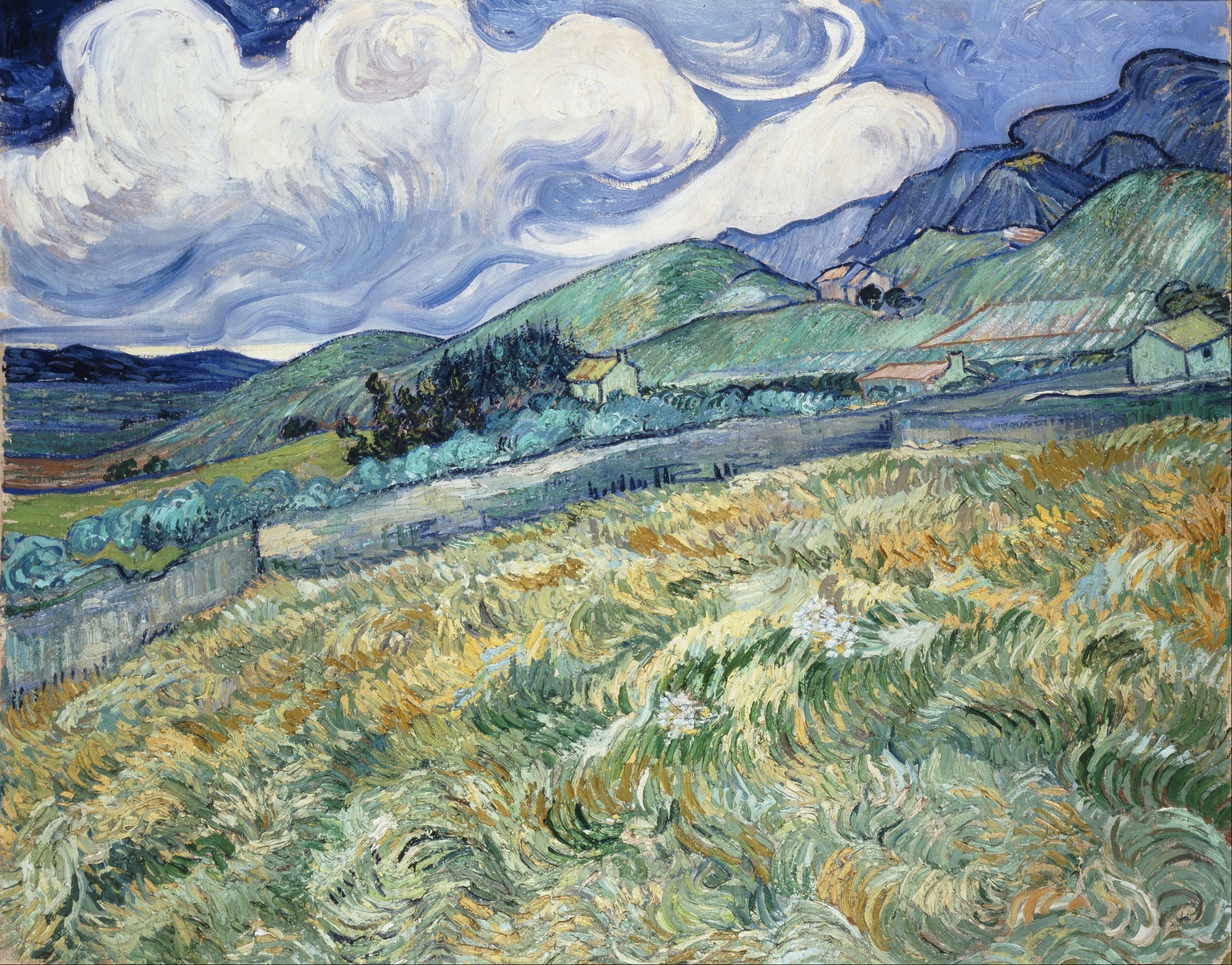
An example of a landscape painting by Van Gogh
An example of a modern landscape painting by Stuart Wright see more on https://wrightsonarts.com
The title “landscape” entered the modern English language as landskip (variously spelt), an anglicization of the Dutch landschap , around the beginning of the 17th century, purely as a term for pieces of art, with its first use as a word for a painting in 1598. Within 30 years it was used to describe vistas in poetry, and eventually as a term for real views. However the cognate term landscaef or landskipe for a cleared patch of land had existed in Old English, though it is not recorded from Middle English. Landscape views in art may be entirely imaginary, or copied from reality with varying degrees of accuracy. If the primary purpose of a picture is to depict an actual, specific place, especially including buildings prominently, it is called a topographical view. Such views, extremely common as prints in the West, are often seen as inferior to fine art landscapes, although the distinction is not always clear; similar prejudices existed in Chinese art, where literati painting usually depicted imaginary views, while professional court artists painted real views, often including palaces and cities.
Modern landscape painting can use a lot of texture or use a lot of metallic paint, or even be so abstract as to be almost unrecognisable as a landscape painting.
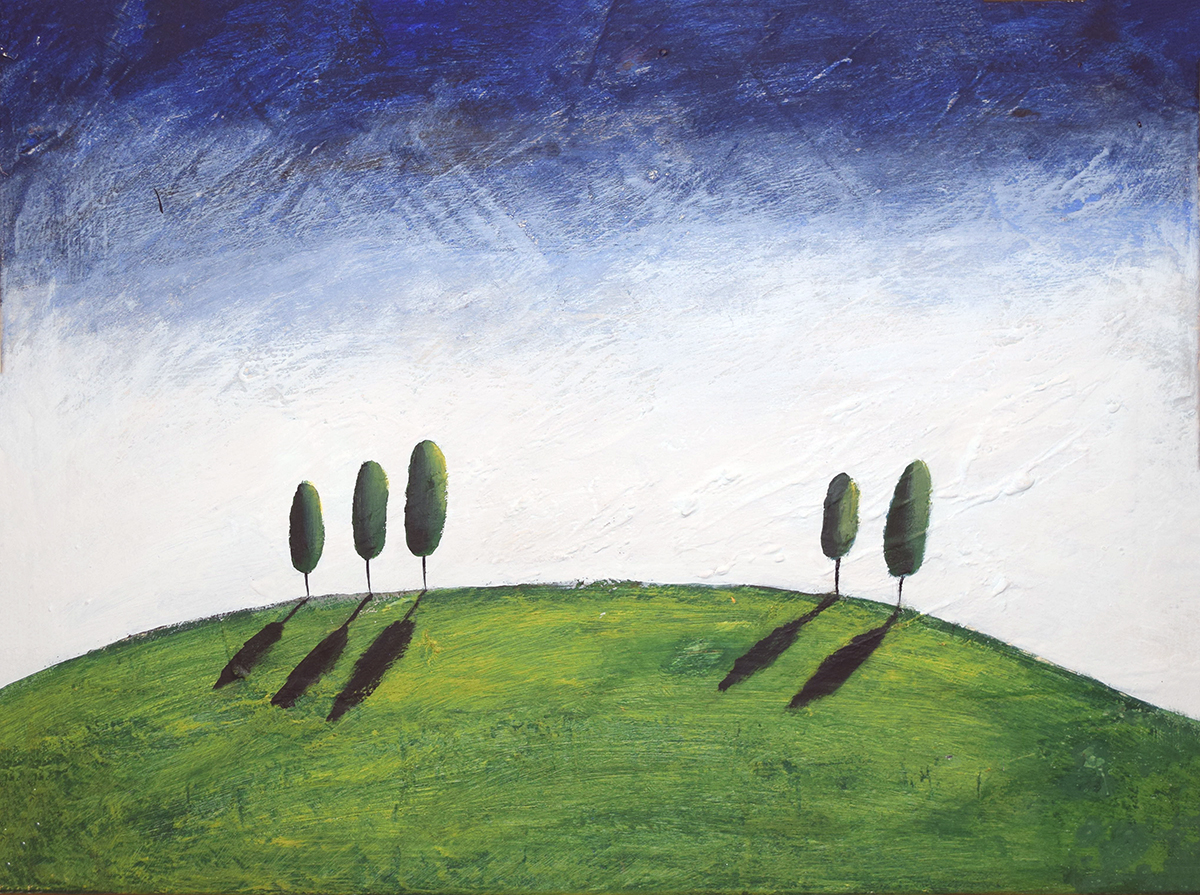
An example of a modern abstract landscape painting available on my website
An example of a cherry tree painting
